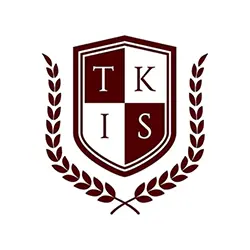Key Stage 3 Levels Chart: An All-Inclusive Manual
Key Stage 3 (KS3) is crucial in the British educational system and focuses on helping students between the ages of 11 and 14 develop their knowledge and abilities. To track academic achievement, parents, students, and educators must comprehend the Key Stage 3 levels chart. The KS3 levels chart is explained in depth in this article, along with its functions and benefits. To demonstrate the usefulness of KS3 instruction, we shall give instances like Thomas Keith Online Independent School.
What is Key Stage 3?
The first stage of secondary education in the UK, known as Key Stage 3, lasts from the seventh to the ninth grade. The curriculum aims to prepare pupils for Key Stage 4 by building on the foundations established in Key Stage 2. Key disciplines, including Science, Math, and English, are the main focus of KS3, together with the humanities, the arts, and physical education.
Explaining the Levels Chart for Key Stage 3 and Its Objective
Students’ progress is monitored and their compliance with expectations is checked using the Key Stage 3 levels chart. Parents and educators can view the chart to see how pupils’ performance compares to the national average.
Organisation of the KS3 Levels Chart
To assess development, the chart employs a numerical grading system. Levels 3 and 8 make up this system, where Level 3 is the lowest requirement for younger or less experienced pupils, and Level 8 denotes extraordinary accomplishment.
Levels three and four: Fundamental knowledge and abilities.
Level 5–6: Most pupils fulfil goals by the end of KS3; performance is intermediate.
A great degree of comprehension and ability is demonstrated at LeLevels-8: Advanced Achievement.
Key Topics and Expectations for Each Level
Enhancing writing abilities, oral communication, and reading comprehension are the main goals of English at Key Stage 3. The English proficiency levels chart aids in assessing pupils’ knowledge in various domains.
Basic text comprehension and grammar are covered in Levels 3–4.
Levels five and six: proficient language use and comprehension of challenging literature.
Levels 7-8: Outstanding writing, presentation, and analytical capabilities.

Calculations
Data handling, algebra, and geometry are among the subjects included in the Math program. A concise summary of how well pupils understand Mathematical topics may be seen in the Key Stage 3 Maths levels table.
Levels 3–4: Foundational Math skills and an introduction to problem-solving.
Algebra, fractions, and geometry proficiency at Levels 5 and 6.
Levels 7 and 8: Excellent analytical abilities and capacity to resolve challenging issues.
Science Key Stage 3 Among the Sciences are physics, chemistry, and biology. The levels chart illustrates a student’s comprehension of scientific concepts as well as their aptitude for carrying out experiments and evaluating the outcomes.
BA’s basic understanding of scientific concepts and terminology is at Levels 3–4.
Levels 5 and 6: Carrying out basic experiments and comprehending results.
Levels 7-8: Detailed comprehension and utilisation of scientific notions.
How KS3 Level Charts Are Implemented in Schools
The function of educators
The KS3 levels chart is used by teachers to inform lesson preparation and student assessments. Teachers can determine which areas of a student’s performance require more help or advanced information by comparing it to the chart.
Instances of Successful Use
The integration of the KS3 levels chart into the teaching process is exemplified by Thomas Keith Online Independent School. Their method helps students understand their progress and create goals by providing them with regular exams and feedback that correspond with the levels chart.
Continual Evaluations
Testing pupils frequently is essential to ensuring that their progress matches the chart. Every term, Thomas Keith Online Independent School administers tests to help students stay on course.
Students’ Gains from Knowing the KS3 Levels Chart
Students can be inspired to improve if they are aware of their position on the levels chart. Realising where they need to improve can help them set reasonable objectives, and knowing that they are making the desired progress can boost confidence.
Regarding Parents
The clarity that the levels chart offers is advantageous to parents. It enables families to keep tabs on their child’s academic development and communicate any issues with educators.
To guarantee that every student has the chance to achieve, educators utilise the chart to modify their lessons to fit the wants of their pupils.

Useful Advice for Parents and Students
Analyzing Developments
Periodically reviewing a student’s work can help to avoid any last-minute surprises. Addressing any learning gaps early on can help prevent them from getting worse.
Asking for Help
It is crucial to get assistance if a student routinely performs below expectations. Learning outside of conventional school hours can be supported by the tools provided by online platforms like Thomas Keith Online Independent School.
Putting Objectives
Students can make clear goals by using the KS3 levels chart. To achieve Level 6 before the end of the year, for instance, a student who is currently at Level 5 in Math can collaborate with their teacher to develop a study schedule.

How Learning at Thomas Keith Online Independent School Aids in Key Stage 3
An organised online learning environment that complements the Key Stage 3 curriculum is offered by Thomas Keith Online Independent School. Among their all-encompassing strategy are:
Interactive Lessons: Captivating lessons that address the curriculum for KS3.
Personalised Feedback: Students can better understand their areas of strength and growth with regular feedback.
Flexible Learning: Different learning styles are supported by allowing students to access resources at their own speed.
FAQs, or frequently asked questions,
Q1. Which age range is covered by Key Stage 3?
Students in Key Stage 3 are 11 to 14 years old.
Q2. In Key Stage 3, how are students evaluated?
Teacher observations, coursework, and routine examinations are used to evaluate students. KS3 levels chart is used to gauge progress.
Q3. What are a Year 7 student’s normal levels?
To reach Level 5 or 6 by the end of KS3, a normal Year 7 student may be working at Level 3 or 4.
Q4. What can parents do to assist their kids in meeting the requirements of KS3?
Parents can support their children by looking over progress reports, promoting regular study habits, and asking for further aid when necessary.
Q5. Why is the Thomas Keith Online Independent School a suitable model for KS3 students?
Thomas Keith Online Independent School helps students reach their academic objectives by offering flexible learning, individualised feedback, and comprehensive support that corresponds with the KS3 levels chart.
In conclusion
It is important to comprehend the Key Stage 3 levels chart to monitor academic achievement and assist students’ development. With unambiguous expectations.




